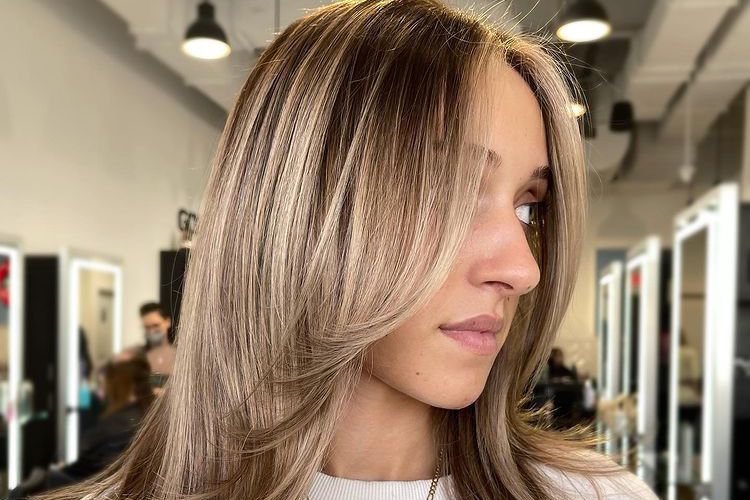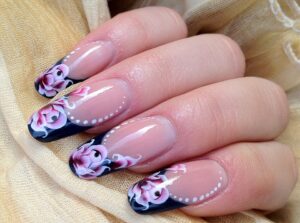Have you ever flipped through a hair magazine or scrolled through stylish ‘dos on Instagram and thought, “I want that?” But when you take a closer look, you notice the models all have layers cut into their hair. You start to wonder, should I layer my hair? Will they look good on me? Or will they just make my hair stringy and thin?
The confusion between layered hair vs non layered hair always creates chaos in our minds. Good news. Layers can work for all different hair types and textures. The key is finding the right layering approach for your specific locks.
In this post, we’ll break down everything you need to know before getting layered hair:
What Do Layers Do To Your Hair?
Let’s start with the basics: what are layers anyway? Layers are when your hairstylist cuts different lengths into your hair, with the top layers shorter and the bottom layers longer. This creates a graduated look.
The shortest layers start at the crown and gradually get longer as they reach the nape of your neck. So you end up with short to long layers all over your head.
This technique creates tons of benefits, including:
- Adds Volume: By removing weight from the top and sides, layers give the illusion of fuller hair.
- Movement and Bounce: Layers allow hair to swing and move freely instead of falling flat.
- Body and Shape: The right layers can boost volume while also adding shape and style.
Now let’s look at how layers impact different hair types.
Fine Or Thin Hair
If you have super-fine or thin hair, traditional layers may seem scary. You might worry they will make your hair look even more limp and wispy. Not to worry. You can still get layers. Just opt for subtle, face-framing layers around your face. Avoid dramatic layers all over your head.
Instead, ask your stylist for textured ends to remove some bulk. This will give you volume while keeping your length. For a friend with baby fine hair, we did some soft layers at the shoulders. This removed weight without sacrificing thickness.
Thick Hair
For those with naturally thick hair, layers are your new best friend. Removing bulk is key to managing thick hair. Notice how heavy and triangularly thick straight hair can look at shoulder length? Layers are the perfect solution. They remove excess bulk and create movement, so thick hair can swing rather than just sit there. Go for long, blended layers to keep your length while cutting out weight.
A sister with tons of thick hair found that long layers around the face and subtle layers throughout give shape and movement while keeping length.
Curly Hair
Curly girls, layers are made for you. They enhance your gorgeous texture by allowing curls to spring free rather than pull each other down. Focus layers around your crown to boost volume on top. Avoid layers that are too short; go for longer, face-framing layers to get lift without losing length.
A curly-haired friend goes for tousled, beachy layers that remove weight but keep ringlets bouncy and defined. The result? Bigger, better curls.
What’s Your Hair Texture?
Your hair’s texture also impacts what layers will look like. Here’s how they work for common textures:
- Wavy: Long, blended layers create movement and flow for waves. Avoid anything too choppy.
Straight: If your hair is stuck straight, go for soft, face-framing layers to get volume while keeping sleekness. - Coarse: Coarse or thick hair loves layers. Go for medium to short layers all over to remove bulk.
- Fine: Keep layers subtle and long to avoid thinning out fine hair. Focus on the ends.
How Short Is Your Hair?
The length of your hair also determines if layers are the right choice. Here are some tips:
- Short: For pixie or bob cuts, layers are necessary to add shape, texture, and volume.
- Medium: Shoulder-length hair can look bulky, so soft to medium layers add movement.
- Long: Only go for long, subtle layers to avoid thinning out the ends.
What’s Your Styling Routine?
Think about how you prefer to style your hair. I love your sleek blowouts. Skip choppy layers in favor of softness. Into messy top knots? Long layers will look cute styled up. If you’re low-maintenance, ask for easy, wearable layers that don’t need much fussing. And invest in products like texture spray to put short pieces into place.
Do You Like Volume And Texture?
Be honest, do you actually want extra volume and texture? Or do you prefer sleek, smoothed-out hair? If you like your hair to lay flat, avoid extreme layers. Opt for subtle face-framing layers instead to get shape without volume. But if you love big, bouncy hair, say yes to shorter layers all over. Embrace the body and texture.
The Most Flattering Face-Framing Layers
No matter your hair type, the face-framing layers around your face are universally flattering. They soften features and add dimension. Go for eye-skimming fringe and chin-length pieces that won’t be too extreme. This shapes your face without being too choppy.
For round faces, add volume at the temples to elongate. For long faces, keep the sides full to add width. Frame square faces with swept-across bangs.
How To Grow Out Layers?
Want to revert back to one-length hair?
No problem. Here are some tips:
- Get regular trims to let layers gradually grow out.
- Use clips or braids to disguise awkward grow-out stages.
- Add layers back in slowly to blend new growth.
- Use volumizing products to disguise the loss of layer volume.
Over time, your hair will return to one length. Be patient and strategic with trims.
Should I Layer My Hair?
Not sure about layers or no layers? Now that you know exactly how layers will impact your hair, Think about your hair type, texture, length, volume, and face shape. If you love bouncing, touchable texture, and volume, say yes to layers. Go for soft, face-framing layers or short, all-over textures. But if you prefer sleek, smoothed-out hair, avoid choppy layers. Opt for subtle shaping and long layers instead.
No matter what you decide, chat honestly with your stylist. They can recommend the most flattering layers that will make you love your hair.
Conclusion
In the debate of layers vs no layers, the bottom line is that layered hair can work for anyone. You just have to find the right layering approach for your unique hair. Happy hair days ahead.



